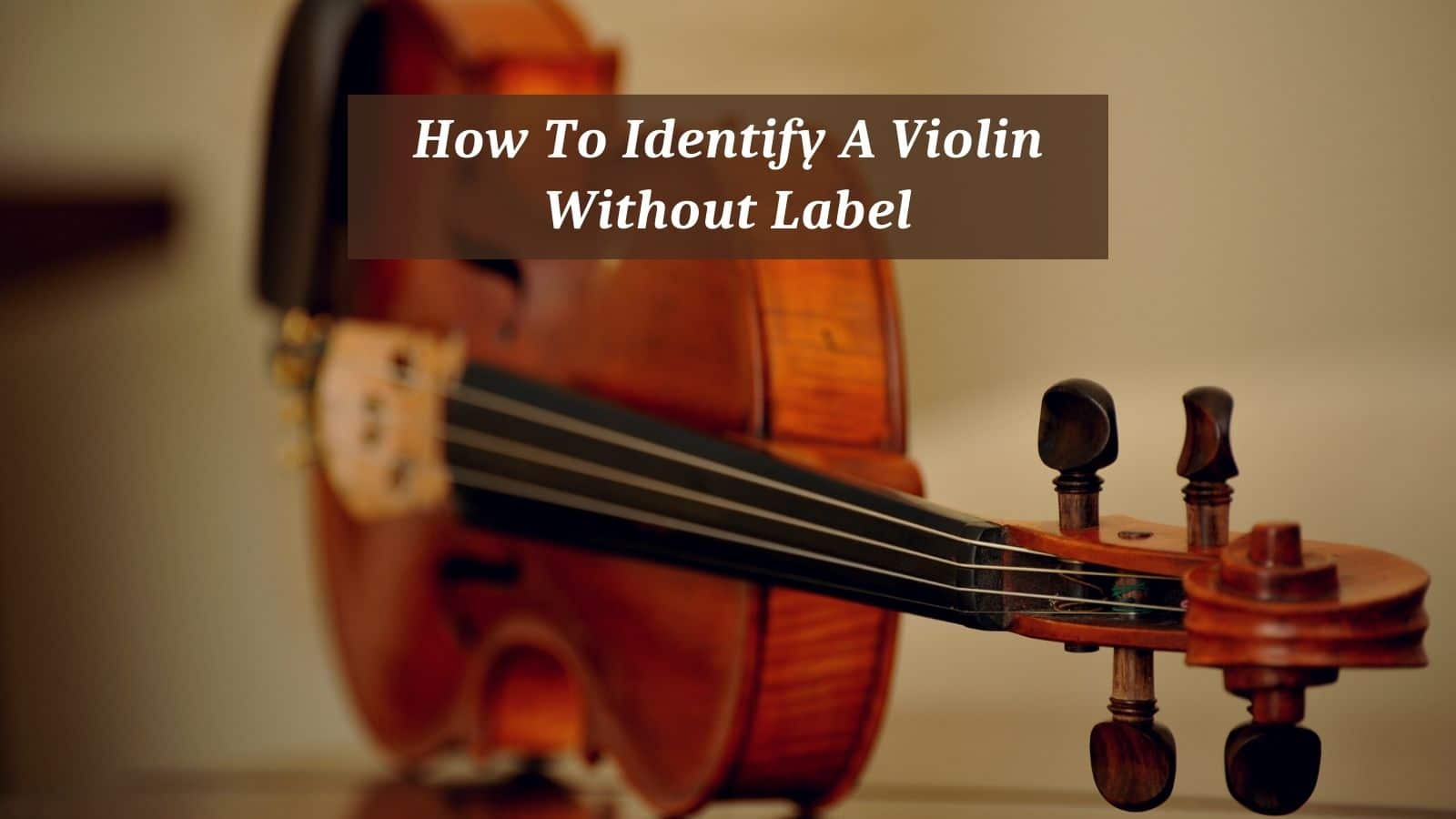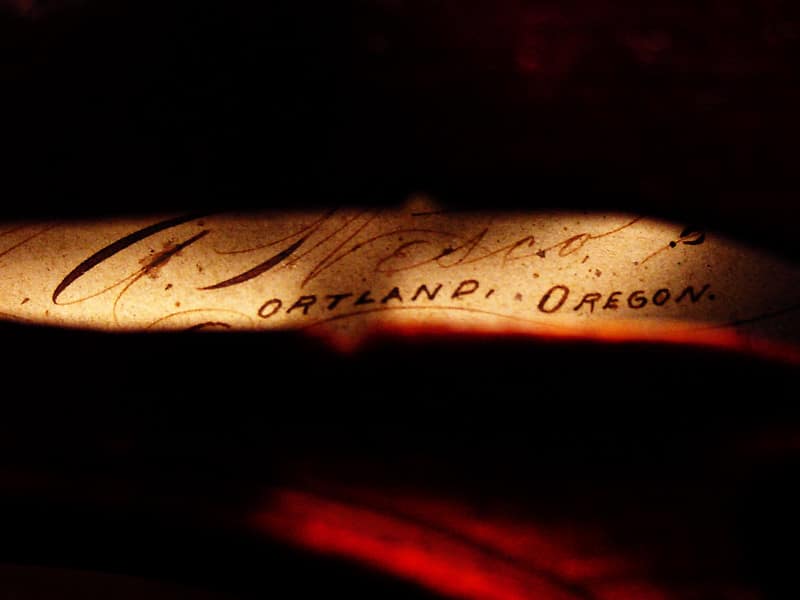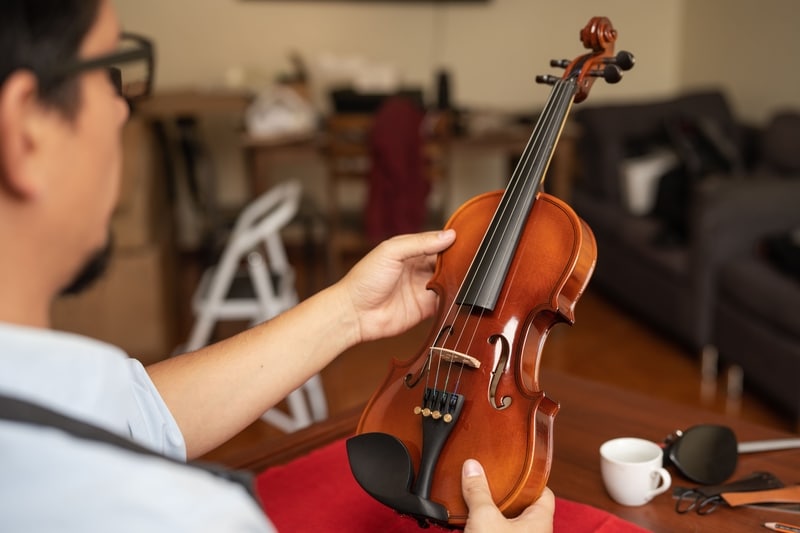
When customers are interested in purchasing a new instrument, the first things that they look for are quality and price. Those characteristics are directly related to the brand, the maker, or perhaps even the shop where the instrument is being sold.
DISCLOSURE: This post may contain affiliate links, meaning when you click the links and make a purchase, we receive a commission.
However, it is not uncommon to find violins that do not bear a label of identification, especially when it comes to very old instruments.
We will list in this article some tips to help you identify an unlabeled violin, which are helpful in case you are planning to buy or sell an instrument.
How To Identify A Violin Without Label
Where is the label placed?
The first thing you must know is where the label is placed. A label can be found inside the violin’s left f-hole. You might need to brush off the dust and move the violin under the light to locate and read it—it is attached to the bottom part.
If you can’t see it easily, it is most likely that the instrument does not bear a label and will be considered an unlabeled violin.
Why some instruments are not labeled?
There are many reasons why a violin comes unlabeled, although most brands do keep a label inside the instrument as a means of advertising.
Among these reasons, we can say that the most common one is the mass production of instruments (mostly from China) that are sold to specific distributors and retailers around the world.
When these instruments arrive at their destination, e.g., warehouses, they are labeled according to the local company’s name. In the case of instruments like violins, it can be quite difficult to insert a label inside the instrument, so it is possible that some companies just attach a label to the violin case.
Another reason why some instruments are unlabeled has to do with forgery. In the past, and until nowadays, it was not uncommon to find a violin of good quality, fully handmade by an experienced luthier or workshop, bearing a fake label with the name of a famous violin maker.
These fake labels add value to the instrument, making it much more expensive. However, in most cases, these forgeries are easy to be spot by experienced violin makers, who simply remove these labels.
There are cases in which the original label was lost over time due to natural wear or after some restoration services.
Unlabeled factory-made violins
It is usually not possible to identify the brand of an unlabeled instrument just by looking at it, but in some cases there are some hints, like the brand name written in the case, bow, or accessories.
In the case of workshop violins, sometimes the name comes carved in the back of the scroll or written by fire (pyrography) in the back of the instrument. Sometimes just a symbol can be found, and only through some research can the name of the workshop be found.
In most cases, these violins can be compared to instruments sold on the market in a particular region. For example, if a dealer resells a particular number of instruments in a specific region, it is likely that the unlabeled violin could have been bought from a local shop.
Local luthiers may be able to tell easily what is the most likely brand of the instrument, even if it bears no labels.
How to identify unlabeled fine violins
In most cases, it is impossible to tell for sure who was the maker of a particular instrument, but it is possible to determine the approximate date of construction and the country, or even part of a country, in which it was produced.
There were in the past and there still are many schools of violin making, each following certain standards or rules of construction regarding size, type of varnish and techniques of application, drying time, colors, materials, dimensions, peculiarities, etc.
By analyzing all of these characteristics, a specialist can give a full description of the instrument and provide the owner with a certificate of appraisal.
How to identify an Italian violin
It is hard to tell with precision the origin of an instrument without a label. A well-informed guess will be the only option in most cases, especially when no features can easily determine a particular school of making. In general, some characteristics can be observed in Italian violins:
- The purflings are perfectly adjusted and put together, with no gaps;
- Not only the exterior, but the interior has been finely sanded as well;
- The top and the ribs are thinner than they would be on French and German instruments;
- They are usually smaller than the German instruments.
How to Identify German Instruments
German violins became very popular and were mass produced, usually with the Italian instruments as a primary source of inspiration. However, they feature unique characteristics:
- They are a bit bigger when compared to Italian instruments.
- They have a more flat top;
- Most of them are alcohol-varnished;
- The insides are not finished smoothly;
How to identify a French violin.
French violin makers developed unique features in their instruments that made them more distinguishable from those made in other countries. Compared to other schools, French violins feature specific characteristics:
- They have a less flat top;
- Their corners are usually more square;
- Usually a dark, reddish varnish.
Conclusions
Only specialists with many years of experience can tell the origin of the violins that arrive at their workshops.
Although many generalizations can be made, it is hard to tell with precision the maker or brand of a particular violin, but a specialist can give an approximate date of construction and country of origin.
As for modern handmade violins, it is hard to tell the origins of the instrument since the profession has spread all over the world, as have the techniques of violin construction.
Concerning the modern, cheap, and mass-produced factory violins, they are mostly produced in China and can be sold anywhere in the world, where they may not have a chance to be labeled by a local dealer.


